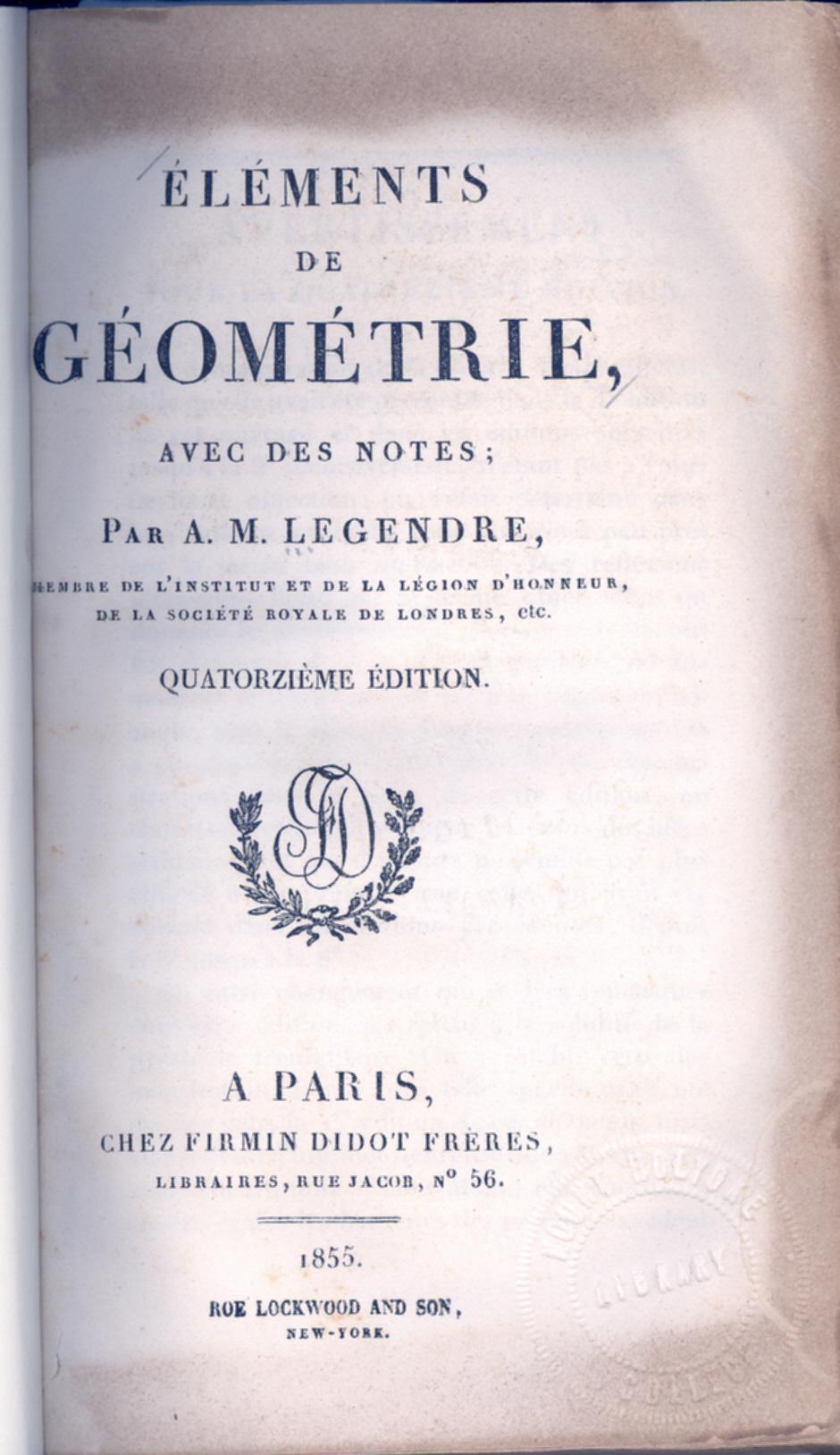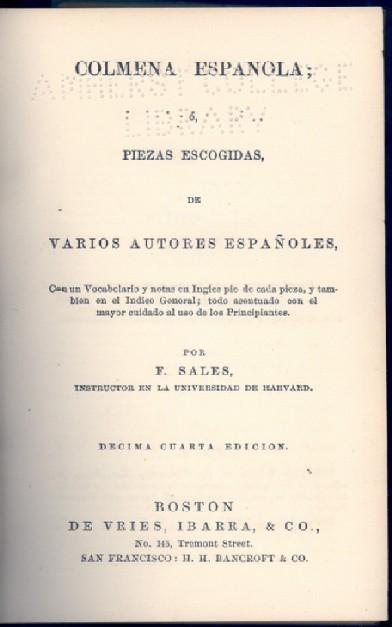


French has been taught continuously at Amherst College since before the Massachusetts Legislature granted the institution its charter in 1825. The catalog for academic year 1824-25 offers seniors "instruction in the Hebrew, French and German Languages, to such as wish it, for a reasonable compensation" (p. 12). It is not entirely certain which faculty member was responsible for this part of the curriculum. Nor is it clear how much more than the prescribed tuition "reasonable compensation" might have been. Samuel Worcester, a preacher of some renown, who the following year became Professor of Rhetoric and Oratory, might have assumed some of these responsibilities. He was listed in the catalog that year as a "Teacher of Languages and Librarian" (p. 4), but those languages might well have been Greek and Latin.
The importance of the romance languages to the curriculum of Amherst College was formally recognized in 1827, when the catalog announced the presence of an unnamed "Professor of French and Spanish Languages and Literatures" (p. 3), at a time when the faculty counted only ten members. Before the fall term of that year, the Trustees had approved two distinct tracks by which students could obtain a degree, one emphasizing ancient languages, the other modern languages.1 For the track in modern languages and literatures (p. 4), instruction in French was to begin in the freshman year and was followed without interruption until graduation, unless the student chose to elect mathematics instead of modern languages during his senior year. Spanish was commenced in the sophomore year and could be continued until the end of one's studies. Latin was offered as a possible alternative to Spanish (p. 7). Reading lists for elementary language courses first appear in the catalog the following year (pp. 12-13). Students of French were required to read in the first year Voltaire's Charles XII and Henriade, in addition to Legendre's Géométrie. By the second year, they read the Fables of La Fontaine. Students of Spanish read the Colmena Espagnola and the Cartas Marruecas. 2
The first instructor of modern languages, who was clearly identified as such, was Ernest Rovel (1828-29), a "Teacher of French and Spanish Languages and Literatures" about whom very little is known (p. 4).3 He remained at the College for two years. Others came and went after having served for only one. Although a Victor H. Manget is known to have taught French between 1837 and 1841, instructors of modern languages moved on at regular intervals. A professorship had been established. But it is possible that it was difficult to fill. Some evidence in the catalogs suggests that language instructors' remuneration was irregular.
A "small charge in addition to regular tuition" was required of all students of modern languages until 1847.4 That year the "Moore Professorship of Latin and French" was established and was first occupied for one year by the Rev. A.D. Gridley (p. 5). The additional charge for the study of modern languages ceased upon Gridley's arrival.
By 1851 the Moore Professorship, re-defined as "of Latin and Modern Languages" (p. 5), had been assumed by George B. Jewett, who introduced the study of Italian into the Amherst College curriculum for the first time.5 In addition to French, he taught one course in Italian that included selected readings from the tradition of Italian drama that were collected under the title Teatro scelto. His beginning students of French studied Ollendorf's French Grammar, while more advanced students perused De Fiva's Classic French Reader. The following year the Rev. James Merrick was hired as an instructor in Persian, Turkish and Arabic and as a lecturer in Mohammedan Literature (p. 6). Jewett and Merrick established a program of graduate studies in Philology and Literature—one of nine then available to Amherst College graduates who wished to continue their training—that included the languages for which they were responsible, German and ancient languages (p. 28). Jewett's tenure lasted until the spring of 1855.
Footnotes:
1 At a Trustee meeting held on August 21, 1826, Professor Jacob Abbott argued strenuously for the establishment of a new curriculum in which French and German would be substituted for Greek and Latin. See Fuess, Story, 98.
2 The reading lists for advanced courses were not published in the catalogs.
3 Fuess reports without revealing his sources that Rovel replaced Charles Moller, a native Frenchman who proved unable to keep discipline in the classroom and who had lasted only a few weeks. Rovel himself is reputed to have encountered difficulties with undisciplined students (Story, 99-100). Within a couple of years, the track emphasizing Modern Languages failed, leaving behind only a permanent course in French (Story, 101, see also Tyler, History 1873, p. 68). In his history of the College, Professor W.S. Tyler maintains that the native speakers who had been enlisted as instructors did not have an effective method for teaching French to Americans. See his History 1873, p. 429.
4 See p. 23 of the Amherst College Catalog 1840-41 and analogous pages in subsequent catalogs.
5 Italian was offered as an elective for seniors that year.